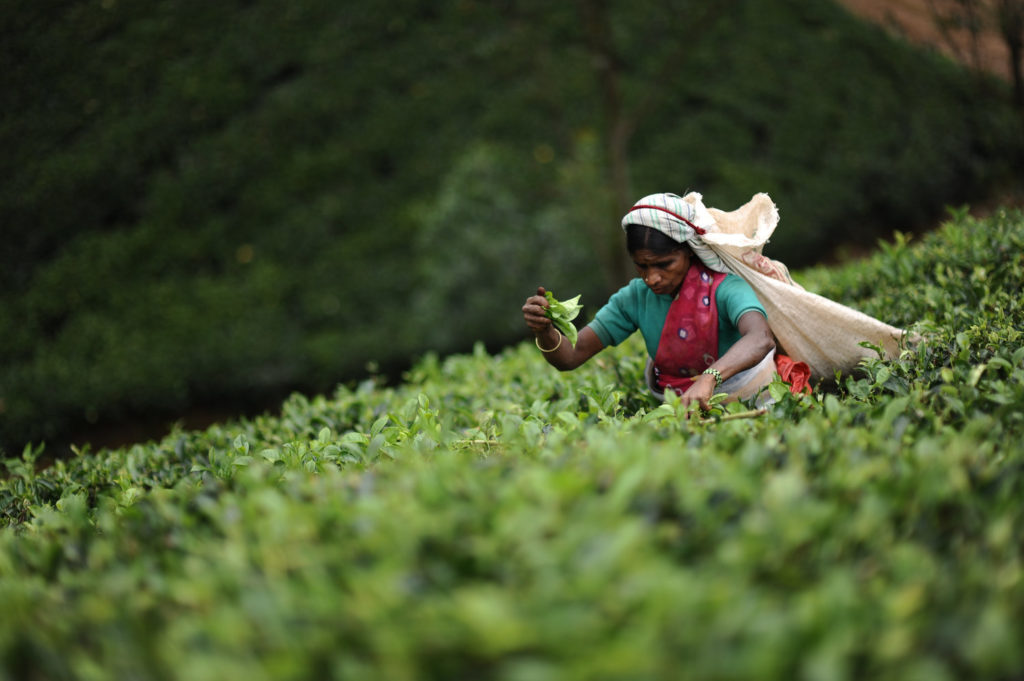Photo courtesy of Longitude 80
The estate sector, a high foreign exchange earner for the country, is undergoing a severe crisis. On one hand, estate workers are underpaid and forced to live in cramped and unhygienic conditions, lacking basic facilities such as health care and education. For five years, they have been demanding an income of just Rs 1,000 a day for their arduous labour. On the other hand, plantation companies are beset with a myriad of difficulties such as rising production costs, falling demand and competition from cheaper exporting countries.
The Rs. 1,000 a day, if it is ever realised, is not in keeping with the galloping rate of inflation. It is not enough to live on even now so there should be another increase in the next two years.
When estates were nationalised from 1972 to 1975, estate land was distributed to people from surrounding villages. Some estate workers, particularly those in the Kandy and Matale districts, lost their homes and relocated to the North and East. As a result of reduced numbers, estate workers have been unable to get their full political representation in Pradeshiya Sabhas, Provincial Councils and Parliament.
In 1992 the Plantation Reform Project (PDP) was initiated with support of the Asian Development Bank (ADB). It proposed the outgrower model to transform estate workers to outgrowers or contract growers. The operations of Regional Plantation Companies (RPCs) would be limited to factory operations and extension services to outgrowers. Some RPCs allocated blocks of land to the workers for maintenance and plucking and tapping to develop a sense of ownership as a prerequisite to leasing blocks of land to the workers.
But the PDP’s recommendations were not implemented by majority of the RPCs, who established their own production models aimed at increasing the income of the estate workers. The Muthurata Estate Company released some workers from estate work and distributed plots with tea bushes to worker families. They were promised that all social services provided by the estate would be continued. At first their income increased but after the estate was given to an organic tea company, the harvest fell resulting in loss of income. Now several estate lands lack maintenance and estate workers are engaged in outside work.
Kelani Valley Plantations launched an outgrower model on a Nuwara Eliya estate. Each family was put in charge of 3,000 tea bushes. After their work in the estates and on holidays they had to work on the land distributed to them and were paid according to the amount of tea leaves they plucked.
The company also initiated another model where workers were given charge of a 1,000 tea bushes on a lease of two years. They sold the tea leaves they plucked to the estate at market prices and maintained their plots of land while working on the estate.
A third model was introduced giving every family 1,750 tea bushes. Both men and women worked up to two hours daily in the estate. After that, they worked on their land. They were eligible for ETF and EPF for the days they worked on the estate, which provided fertilizer and other inputs for maintaining their other land. The cost of this was charged from the workers on an installment basis. The estate purchased the plucked leaves at the market price.
In all these models, the income of the workers increased.
Apart for the outgrower models introduced by the companies, another production model was being followed in the Southern Province, under which a Co-operative Society was formed with a membership of 2,500 tea smallholders. The society established a tea factory and provided production related training to smallholders as well as fertilizer at reduced rates. The society purchased green leaves at market price.
The society offered scholarships to the children of smallholder members and built houses for poor families. Night meals, morning meals and resting rooms were provided to factory workers. There was a financial scheme for workers who fell ill.
The factory has been computerised so green leaves supplied by smallholders were weighed electronically and the data was immediately entered in the society’s computer. The information was provided to smallholders. Trained staff have been appointed to supervise the crops and provide expert advice. The smallholder tea factory has been functioning for over 10 years.
Unless plantation workers’ income was increased by introducing these models, they will face a severe economic crisis in the coming years as will the plantation companies.
When selecting an alternative model, the following factors have to be taken into consideration:
- Distributing land to outsiders may result in diluting the political power of estate workers
- Tea land should not be distributed to those who are not workers on estates
- Estate workers should be given a 30 year lease for the land
- Companies should supervise the estate workers instead of subcontracting
- The workers should be able to hand the land back to the companies if the venture is not successful
- If the maintenance costs such as fertilizer cost and pruning are charged to the workers, the company should purchase green tea leaves from them at the market price
- State and private estates that run at a loss should be brought under the co-operative system with plantation workers as shareholders
